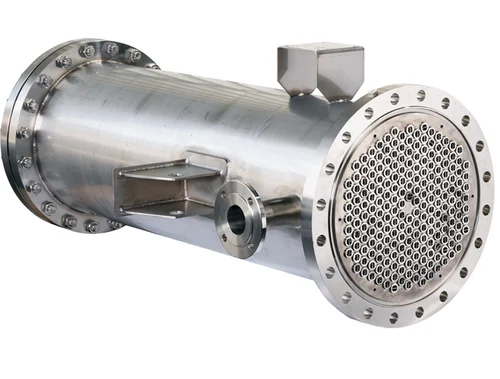
Industrial Heat Exchanger
Industrial Heat Exchanger Specifications:
Type of Heat Exchanger: Decide on the type based on your application—shell-and-tube, plate, air-cooled, or finned-tube, among others. Each type has its own advantages depending on factors like space, maintenance, and efficiency.
Heat Transfer Area: Calculate the required heat transfer area based on the heat duty (the amount of heat to be transferred) and the heat transfer coefficient. This ensures efficient thermal performance.
Material of Construction: Choose materials that can withstand the operating temperatures, pressures, and corrosive nature of the fluids. Common materials include stainless steel, carbon steel, and titanium.
Fluid Properties: Consider the type of fluids (e.g., water, oil, chemicals), their temperatures, viscosities, and whether they are clean or contain particulates. This affects the selection of the heat exchanger design and material.
Operating Conditions: Ensure the heat exchanger can handle the maximum and minimum temperatures and pressures of your application. Check the design pressure and temperature ratings.
Pressure Drop: Minimize pressure drop to ensure efficient operation and reduce energy costs. High pressure drop can lead to increased pump power requirements and reduced overall system efficiency.
Thermal Performance: Evaluate the heat exchanger’s thermal performance using parameters like the overall heat transfer coefficient and the effectiveness of the exchanger. This ensures it meets your heat transfer requirements.
Cleaning and Maintenance: Consider how easy it is to clean and maintain the heat exchanger. For applications with fouling fluids, choose a design that allows for easy access and cleaning.
Size and Space: Ensure the heat exchanger fits within the available space and meets the size constraints of your installation.
Regulatory Compliance: Check for any industry standards and regulations that apply to your heat exchanger, such as ASME codes or API standards.







